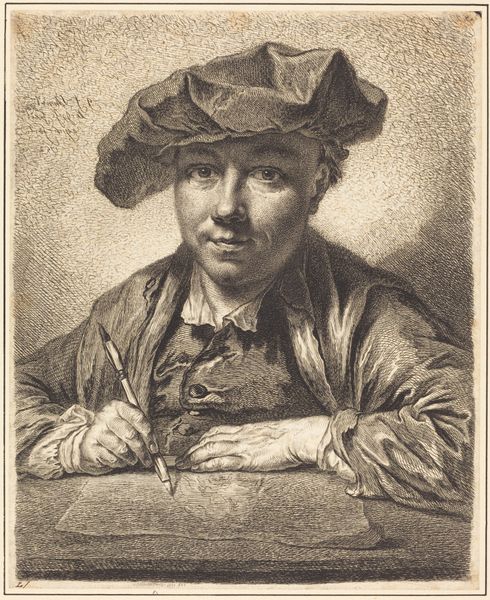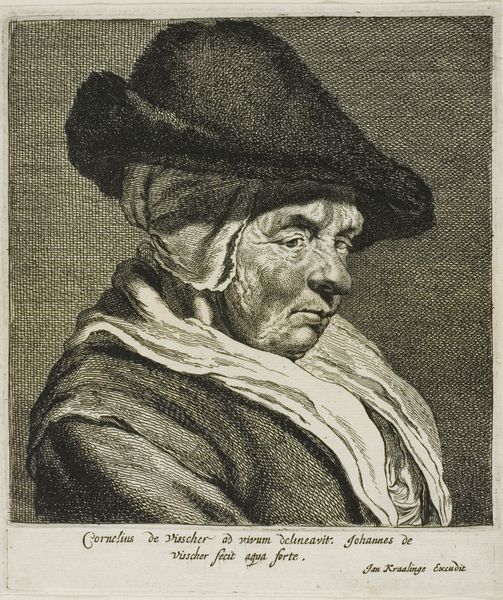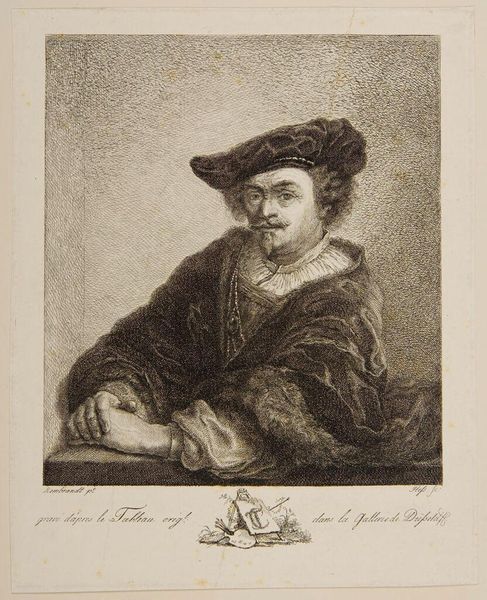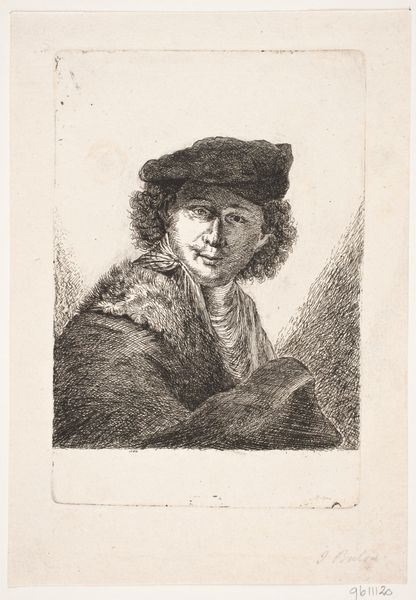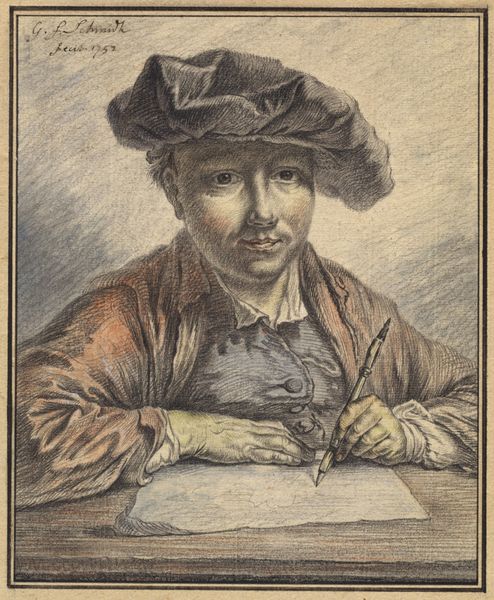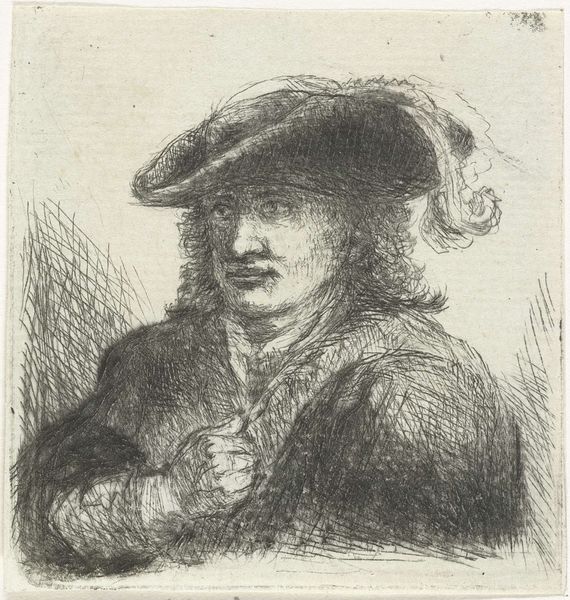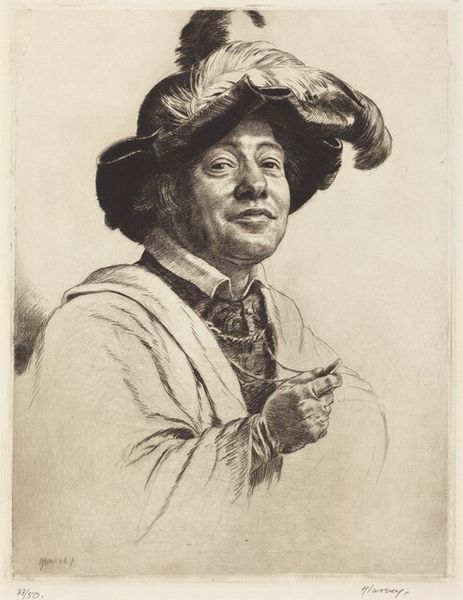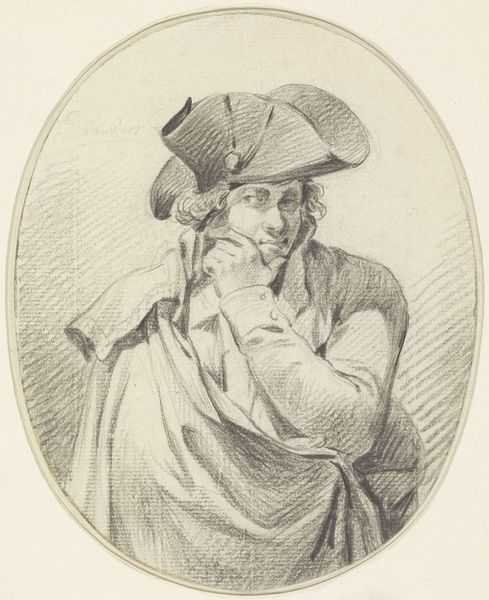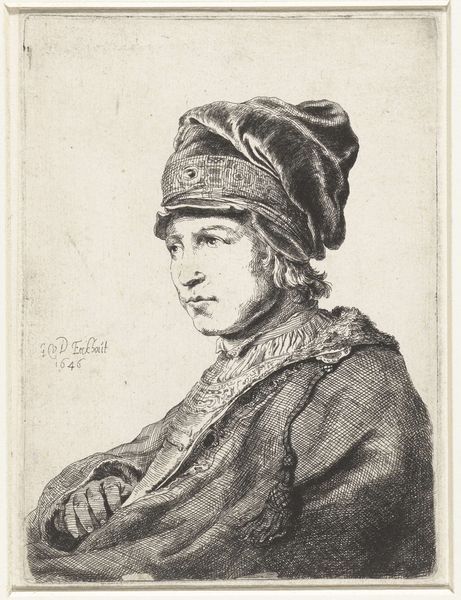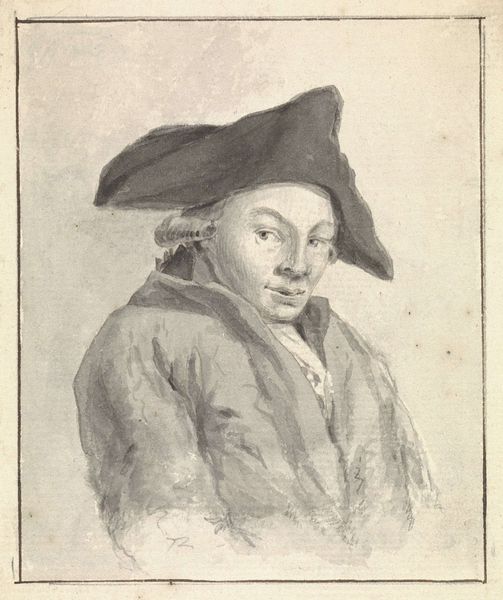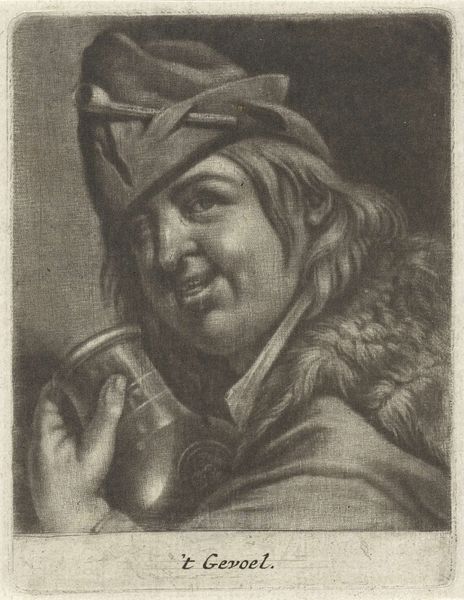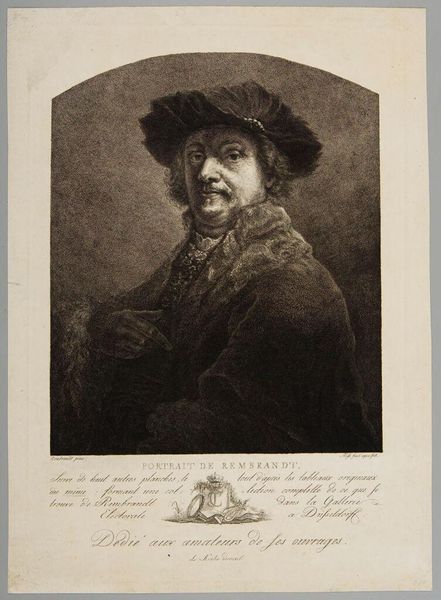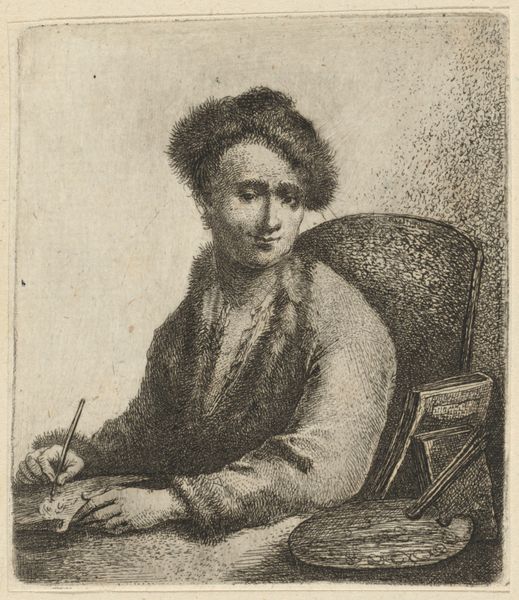
Copyright: CC0 1.0
Curator: Here we have Georg Friedrich Schmidt's "Self-Portrait." Editor: It's evocative, isn't it? The delicate lines create a sense of immediacy, of witnessing the artist at work. Curator: Schmidt, a prominent 18th-century printmaker, was deeply engaged with the artistic and intellectual circles of his time. His self-portraits, like this one, speak to the rising status of the artist in society. Editor: The gaze, though… it’s not just about status. It's a conscious construction of identity, especially intriguing when considering the limited social mobility afforded artists then. How might his class and access impact his self-representation? Curator: Precisely. Schmidt used his prints not just for artistic expression but as a form of social currency, circulating his image amongst patrons and fellow artists to cultivate his reputation. Editor: So, it’s a visual negotiation of power, a carefully etched performance that blurs the line between self-expression and socio-political strategy. The image of an artist at work could be seen as a statement about the importance of labor. Curator: Indeed, understanding the printmaking process itself and its role in disseminating images is key to appreciating the artwork's significance. Editor: It encourages me to consider the work as more than just a portrait; it's a reflection on the role and perception of the artist in society and the power dynamics at play. Curator: Agreed. It’s a testament to how art and politics are intertwined, especially when artists begin to engage directly with portraying themselves.
Comments
No comments
Be the first to comment and join the conversation on the ultimate creative platform.
